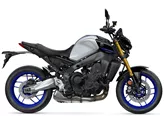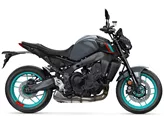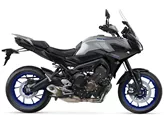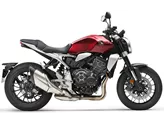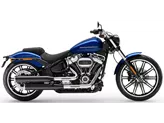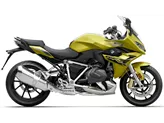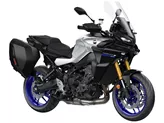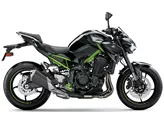Kawasaki Z 800 2013 vs. Yamaha MT-09 2017

Kawasaki Z 800 2013

Yamaha MT-09 2017
Vue d’ensemble - Kawasaki Z 800 2013 vs Yamaha MT-09 2017
The Kawasaki Z 800 model year 2013 and the Yamaha MT-09 model year 2017 are both naked bikes with similar engine types, in-line configurations, and liquid cooling systems. However, there are several differences between the two models that should be considered.
In terms of engine power, the Kawasaki Z 800 2013 has a slightly lower output with 113 HP compared to the Yamaha MT-09 2017, which boasts 115 HP. Similarly, the torque of the Yamaha MT-09 2017 is slightly higher at 87.5 Nm compared to the 83 Nm of the Kawasaki Z 800 2013. The Yamaha MT-09 2017 has three cylinders, while the Kawasaki Z 800 2013 has four.
Both bikes feature upside-down telescopic forks for the front suspension, providing stability and control during rides. However, the Yamaha MT-09 2017 has an advantage in terms of its chassis, as it is made of aluminum, which is known for its lightweight and durable properties. In contrast, the Kawasaki Z 800 2013 has a steel frame, which may add some weight to the bike.

Kawasaki Z 800 2013
Both bikes have double disk brakes at the front, ensuring efficient stopping power. They also share the same tire dimensions, with a width of 120 mm and a diameter of 17 inches for both the front and rear tires. The wheelbase of the two models is also quite similar, with the Kawasaki Z 800 2013 measuring at 1445 mm and the Yamaha MT-09 2017 at 1440 mm.
When it comes to seat height, the Yamaha MT-09 2017 has a lower seat height of 815 mm compared to the 834 mm of the Kawasaki Z 800 2013. Additionally, the fuel tank capacity of the Yamaha MT-09 2017 is slightly smaller at 14 liters, while the Kawasaki Z 800 2013 can hold up to 17 liters of fuel.

Yamaha MT-09 2017
In terms of strengths, the Kawasaki Z 800 2013 is known for its eye-catching and chunky look, confident acceleration, relaxed geometry, and powerful brakes. On the other hand, the Yamaha MT-09 2017 offers additional strengths such as Öhlins suspension, Akrapovic exhaust for improved optics and sound, Magura HC3 radial brake pump for enhanced braking performance, and Carbon2Race covers for a grandiose appearance. The combination of seat, footrests, and handlebar clamps on the Yamaha MT-09 2017 is also highly effective.
However, both models have their weaknesses. The Kawasaki Z 800 2013 has limited freedom of movement for the legs, which may be a drawback for some riders. On the other hand, the Yamaha MT-09 2017 has certain weaknesses such as a higher financial outlay, requiring more working time, certain parts needing registration, and the ECU Flash not being road legal.
In conclusion, while both the Kawasaki Z 800 2013 and the Yamaha MT-09 2017 are powerful naked bikes with similar technical specifications, they have distinct differences in terms of engine power, chassis, seat height, and fuel tank capacity. Additionally, each model has its own strengths and weaknesses, which should be considered based on individual preferences and requirements.
Caractéristiques techniques Kawasaki Z 800 2013 par rapport à Yamaha MT-09 2017
Avantages et inconvénients en comparaison
Avantages et inconvénients en comparaison
Kawasaki Z 800 2013

Dans l'ensemble, la Z800 a livré une performance sensationnelle. Compte tenu du fait que rien n'a été modifié ou optimisé sur le véhicule, à l'exception du pot d'échappement Remus, le résultat final est superbe.
Yamaha MT-09 2017

En conclusion, après plusieurs arrêts tout au long de la saison, je peux dire que le résultat est excellent. Notre MT-09 est parfaite, tant en termes de performances que d'esthétique. Le châssis a probablement été notre point le plus important. Alors qu'il y avait auparavant beaucoup (trop) de mouvement à l'arrière dans les virages rapides, il a été repassé sans sourciller. L'amortisseur STX 46 monté est assez ferme dans sa conception de base, mais il se débrouille sans problème au quotidien sans être désagréable. Grâce aux possibilités de réglage généreuses, il y a de toute façon encore de la marge pour les préférences individuelles et l'utilisation. La fonction de la cartouche NIX 30 est également impressionnante. La réactivité s'est nettement améliorée, surtout en charge. De même, il y a maintenant beaucoup plus de réserve disponible lors du freinage sur piste. Là où, avec le réglage d'origine, la fourche se bloquait et déclenchait l'ABS en cas de freinages violents, le freinage se poursuit désormais efficacement. De plus, la MT-09 suit désormais la ligne visée dans le rayon de virage comme si elle était seule - un vrai plaisir. La vue et le son du système complet Akrapovic sont également un pur plaisir, et le fait qu'il en résulte encore quelques chevaux de plus se ressent surtout dans le tiers supérieur du régime. La roue avant s'élance encore plus volontiers dans la galerie en 2e et 3e vitesse.
Comparaison des prix Prix moyen du marché Kawasaki Z 800 vs Yamaha MT-09
There are a few key differences between a Kawasaki Z 800 2013 and a Yamaha MT-09 2017. In terms of price, the actual average price of a Yamaha MT-09 2017 is about 23% higher. Compared to Yamaha MT-09 2017 there are less Kawasaki Z 800 2013 bikes available on the 1000PS.de Marketplace, specifically 7 compared to 10. It takes less time to sell a Kawasaki Z 800 with 56 days compared to 73 days for a Yamaha MT-09. Since model year 2013 1000PS.de editors have written 11 reviews for the Kawasaki Z 800 and 57 reviews for the Yamaha MT-09 since model year 2013. The first review for the Kawasaki Z 800 was published on 9/6/2012 and now has more than 8,100 views. This compares to more than 39,900 views for the first review on Yamaha MT-09 published on 6/10/2013.


